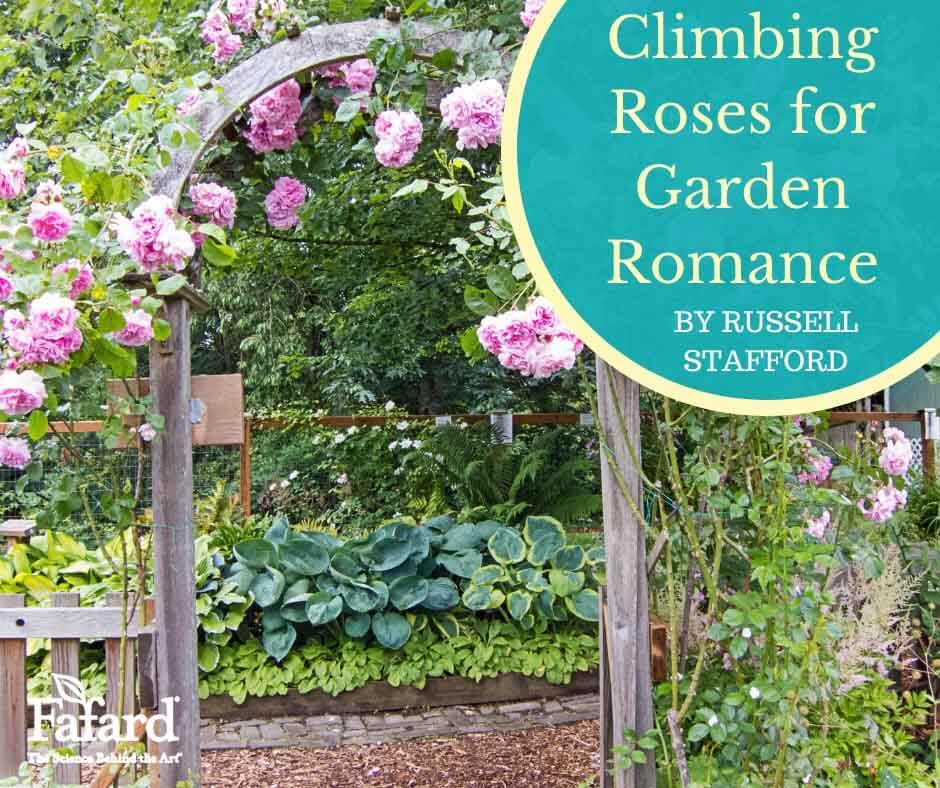
For garden romance, nothing surpasses a climbing rose cascading over an arbor, its arching canes laden with a torrent of voluptuous blooms.
Sadly, many climbing rose varieties do not live up to this promise. They are – after all – roses, which are rightfully notorious for their susceptibility to pests and diseases. Arching canes dripping with roses aren’t nearly as romantic when they’re also dripping with fungal spores and sawfly larvae.
On the other hand, a few climbing roses (including those profiled below) literally and figuratively rise above the frailties that dog so many of their kin. Give them ample sun and fertile, moist, humus-rich soil, and they’ll give you years of virtually problem-free beauty (and romance). You’ll also want to give them a yearly pruning, removing old woody canes at the base in early spring or after flowering (for non-repeaters).
Resilient, Reliable Climbing Roses
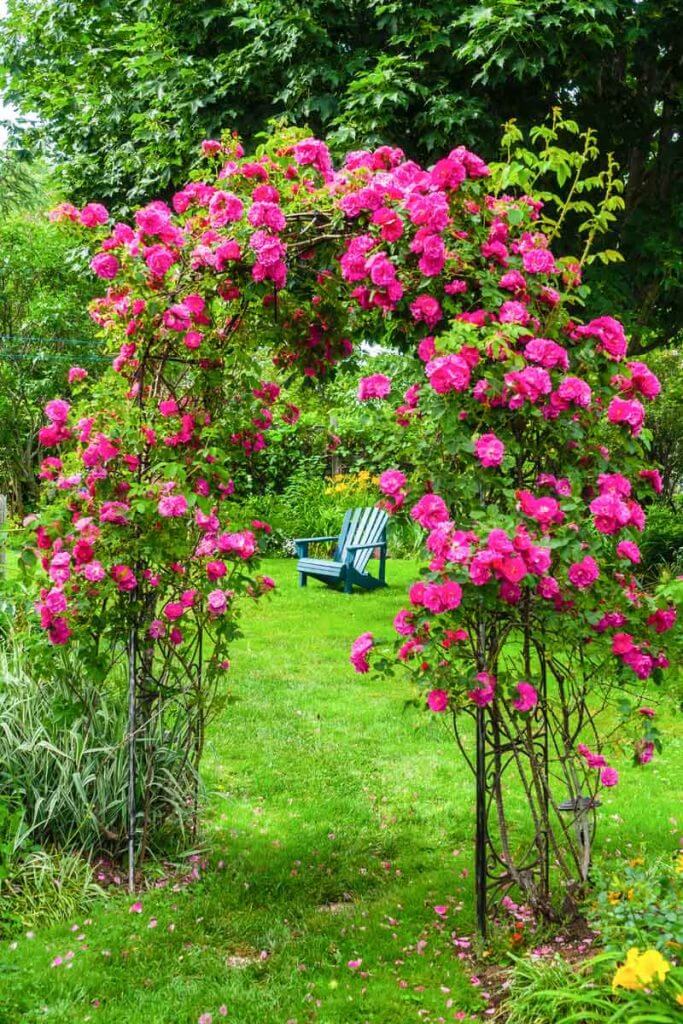
‘John Cabot’ – 8- to 10-foot canes produce quantities of large, deep pink, double roses in late spring. Stiff and upright in growth, this wickedly thorny cultivar works best when bound to a somewhat out-of-the-way structure such as a trellis. As with many of the hardiest, most disease-resistant roses for American gardens, ‘John Cabot’ is a hybrid of the bomb-proof species Rosa kordesii. It’s also one of several hardy, rugged, and beautiful climbers developed in Canada as part of the Explorers Series of roses. Temperatures of minus 20 F (USDA Hardiness Zone 4) are no problem for this cultivar.
‘William Baffin’ – Another outstanding Explorer Series rose with Rosa kordesii genes, this tireless bloomer produces a late-spring-to-frost succession of large, strawberry-pink, semi-double roses with prominent yellow stamens. The arching, 8- to 10-foot, glossy-leaved canes are good for training to a structure, but ‘William Baffin’ also works well as a large freestanding shrub. This exceptionally hardy Explorer rose overwinters with no protection to USDA Zone 3.
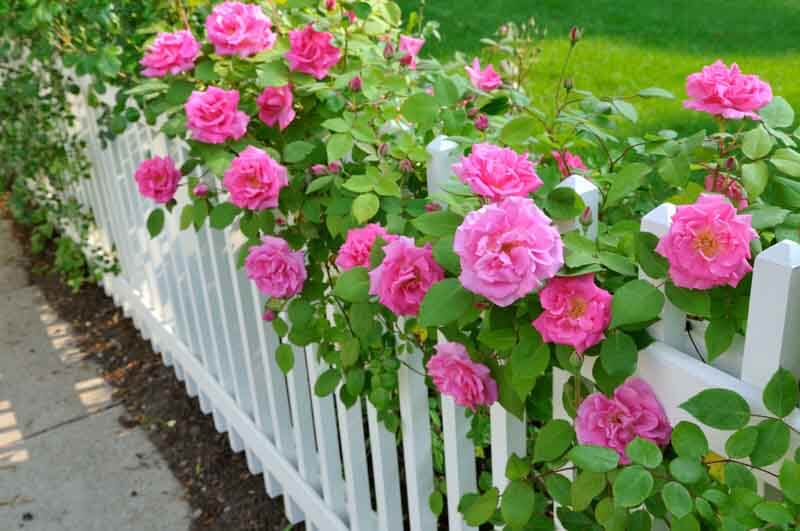
‘Awakening’ – The ubiquitous climbing rose ‘New Dawn’ gave rise to this superior sport. The large, fragrant, soft-pink blooms are fully double, to the point of being “quartered” in old-rose style. They’re borne almost continually from late spring to frost on towering, 10- to 14-foot canes. Lush, glossy, disease-resistant foliage and USDA Zone 5 hardiness add further to its value.
‘Dortmund’ – The relatively flexible canes of ‘Dortmund’ are ideal for training horizontally along a fence or wall, where they make quite the show when bedecked with bright red, white-eyed, single blooms. Flowering peaks in late spring and early summer, but regular deadheading will encourage additional rounds of bloom later in the season. Showy orange rose hips follow the flowers if they’re not removed. Another Kordesii hybrid (but not an Explorer), ‘Dortmund’ is exceptionally hardy, to USDA Zone 4.
‘Climbing Pinkie’ – Speaking of flexible roses, this Polyantha hybrid will weave through a trellis, trail down an embankment, or do any number of other useful things that are beyond the capabilities of stiffer cultivars. It’s also virtually thornless, which means you can fearlessly move in close to enjoy its fragrant clusters of small double pink roses. Flowering peaks in late spring with little or no repeat, and hardiness is moderate (USDA Zone 6).
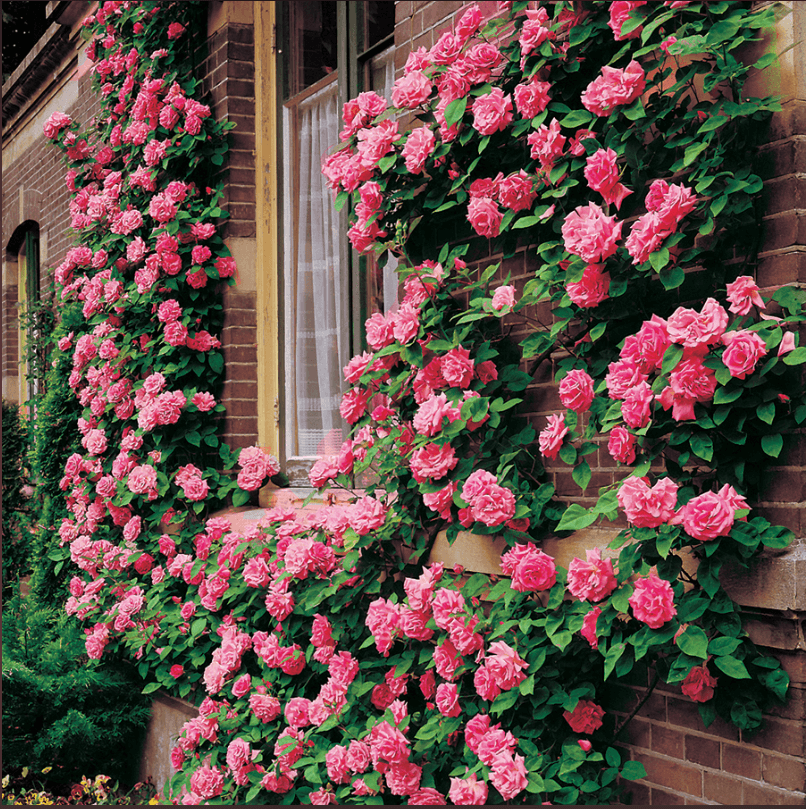
‘Royal Sunset’ – Disease-resistant climbers also come in classic hybrid-tea style, with pointed buds opening to rounded, fully double, fragrant blooms. Introduced in 1960, when hybrid teas were all the rage, ‘Royal Sunset’ bears masses of apricot-pink roses in late spring on tall, 8- to 14-foot canes. Lesser flushes of bloom repeat later in the season. Like most hybrid teas, ‘Royal Sunset’ has only moderate winter-hardiness, to USDA Zone 6.
‘Zephirine Drouhin’ – If you really want to dial up the romance, plant ‘Zephirine Drouhin’, a nineteenth-century heirloom variety with intensely fragrant double pink roses from spring until frost. Nearly thornless, it makes the perfect subject for a bench-side bower or other intimate garden feature. Although not quite as hardy and pest resistant as the Kordesii hybrids, ‘Zepherine’ is still remarkably adaptable, tolerating semi-shade and wintering well into USDA Zone 5.
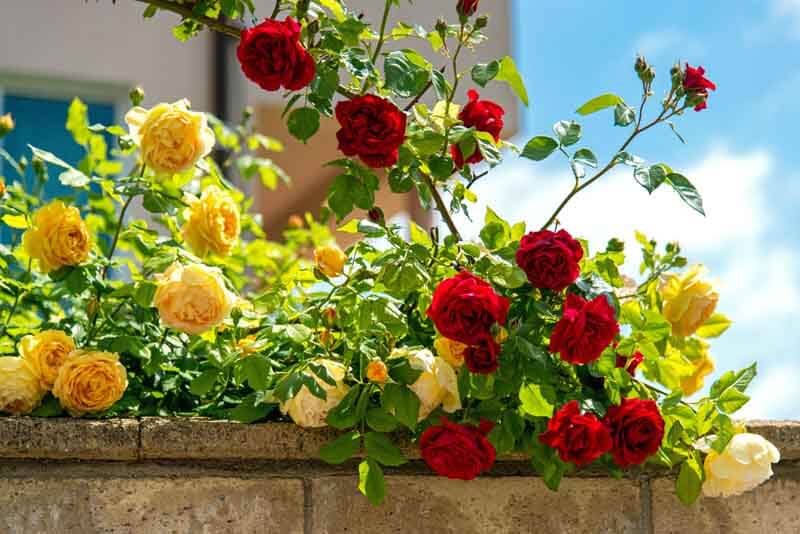
Spring is a great time to plant the climbing rose of your dreams. Just dig an ample planting hole (3 feet wide or more), amend the backfill with Fafard® Premium Natural & Organic Compost, water every few rainless days while your rose establishes, and let the romance begin. (Click here to learn more about how to properly plant shrubs.)

